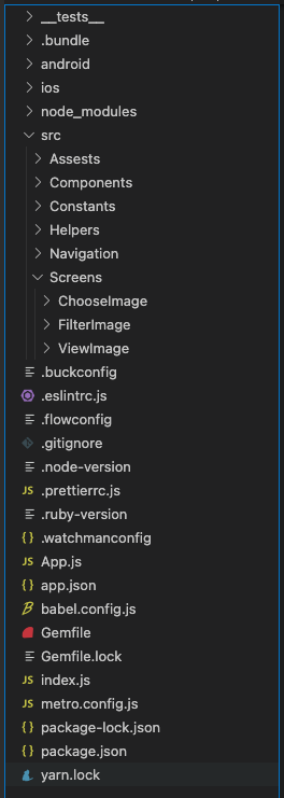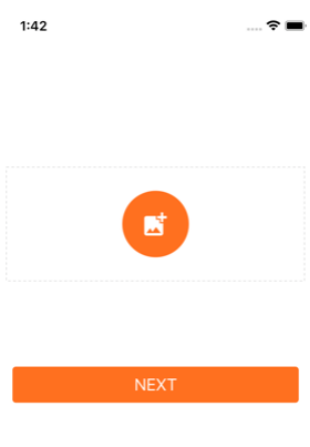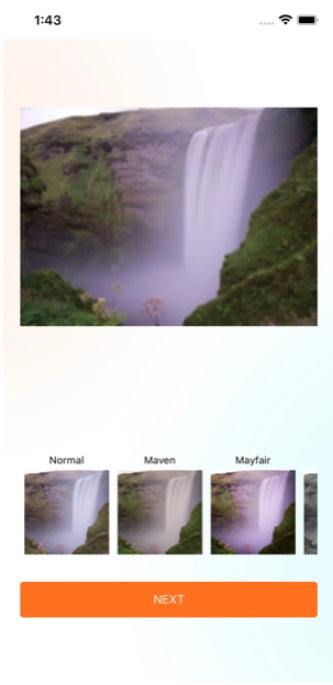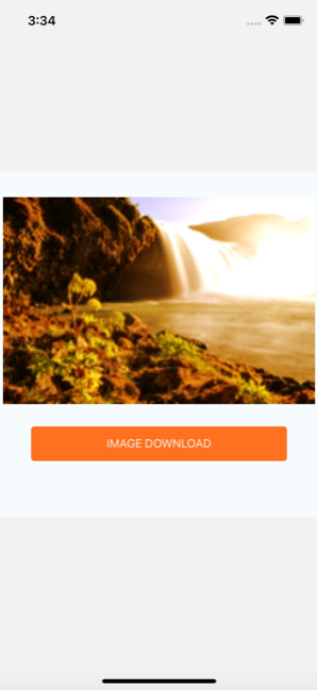import React, { useState } from 'react';
import {
Image,
Alert,
SafeAreaView,
StyleSheet,
Text,
TouchableOpacity,
View,
} from 'react-native';
import { launchImageLibrary } from 'react-native-image-picker';
import {
widthPercentageToDP as wp,
heightPercentageToDP as hp,
} from 'react-native-responsive-screen';
import Constants from '../../Constants/Constants';
import Button from '../../Components/Button';
import Loader from '../../Components/Loader';
import ImagePicker from 'react-native-image-crop-picker';
const CreatePost = ({ navigation }) => {
const [thumbnail, setThumbnail] = useState({});
const [loaderVisible, setLoaderVisible] = useState(false);
const onChooseImage = async (selectionType) => {
const options = {
cameraType: 'back',
mediaType: selectionType,
includeBase64: true,
};
const result = await launchImageLibrary(options);
if (!result.didCancel && result.assets) {
if (selectionType === 'photo') {
const photoData = {
uri: result.assets[0].uri,
type: result.assets[0].type,
name: result.assets[0].fileName,
};
setThumbnail(photoData);
}
}
if (result.errorMessage) console.log('error');
};
const handleNextStepClick = async () => {
if (!thumbnail.length) {
setLoaderVisible(false);
if (!Object.keys(thumbnail).length) {
Alert.alert('Please add thumbnail image');
return;
} else {
return ImagePicker.openCropper({
includeBase64: true,
path: thumbnail,
cropping: false,
freeStyleCropEnabled: true,
compressImageQuality: 0.8,
showCropFrame: true,
mediaType: 'photo',
}).then(image => {
navigation.navigate('FilterScreen', { imageData: image });
})
}
}
};
return (
<SafeAreaView
style={styles.safeView}>
<View
style={styles.imageView}>
{Object.keys(thumbnail).length ? (
<>
<View
style={styles.insideView}>
<Image
source={{ uri: thumbnail?.uri }}
style={styles.thumbImage}
resizeMode={'contain'}
/>
</View>
<View
style={styles.editView}>
<TouchableOpacity
activeOpacity={0.6}
onPress={() => onChooseImage('photo')}
style={{
...styles.addLessonBtnContainer,
marginEnd: 7,
}}>
<Image
source={require('../../Assests/icon_edit.png')}
resizeMode="contain"
style={styles.editImage}
/>
</TouchableOpacity>
<TouchableOpacity
activeOpacity={0.6}
onPress={() => setThumbnail({})}
style={styles.addLessonBtnContainer}>
<Image
source={require('../../Assests/delete.png')}
resizeMode="contain"
style={styles.editImage}
/>
</TouchableOpacity>
</View>
</>
) : (
<>
<View style={{ ...styles.pickContainer, }}>
<TouchableOpacity
onPress={() => onChooseImage('photo')}
activeOpacity={0.7}>
<View style={styles.galleryView}>
<Image
source={require('../../Assests/Pick.png')}
style={styles.galleryImg}
resizeMode="contain"
/>
</View>
</TouchableOpacity>
</View>
<View
style={styles.postTextView}>
<Text style={styles.introText}>
{Constants.create_post_story}
</Text>
</View>
</>
)}
</View>
<View style={styles.buttonView}>
<Button
title={Constants.next}
onclick={handleNextStepClick}
style={styles.button_next}
/>
</View>
<Loader titleText={''} visible={loaderVisible} />
</SafeAreaView>
);
};
const styles = StyleSheet.create({
button_next: {
textTransform: 'uppercase',
fontSize: wp('5%'),
color: 'white',
marginHorizontal: wp('7%')
},
editView: {
justifyContent: 'flex-end',
alignItems: 'center',
marginTop: wp('5%'),
alignSelf: 'flex-end',
display: 'flex',
flexDirection: 'row',
},
imageView: {
paddingHorizontal: wp('5%'),
paddingVertical: wp('10%'),
backgroundColor: '#FFFFFF',
marginTop: wp('5%'),
width: wp('100%'),
},
insideView: {
width: '100%',
justifyContent: 'center',
alignItems: 'center',
},
thumbImage: {
width: wp('100%'),
height: wp('80%'),
},
editImage: {
width: wp('4.5%'),
height: wp('4.5%'),
tintColor: '#FFFFFF',
},
galleryView: {
height: wp('20%'),
width: wp('20%'),
backgroundColor: '#FF701F',
borderRadius: 40,
justifyContent: 'center',
alignItems: 'center'
},
galleryImg: {
height: wp('7%'),
width: wp('7%'),
tintColor: 'white'
},
postTextView: {
marginTop: wp('5%'),
},
safeView: {
flex: 1,
backgroundColor: '#fff',
},
buttonView: {
marginTop: wp('7%'),
marginBottom: wp('3%')
},
pickContainer: {
borderWidth: 1,
borderColor: '#DFDFDF',
marginTop: hp('10%'),
justifyContent: 'center',
alignItems: 'center',
borderStyle: 'dashed',
width: '100%',
paddingVertical: wp('7%'),
},
addLessonBtnContainer: {
backgroundColor: '#FF701F',
borderRadius: 4,
paddingHorizontal: wp('3%'),
paddingVertical: wp('2%'),
},
introText: {
textTransform: 'uppercase',
textAlign: 'center',
textAlignVertical: 'center',
color: '#1F1F1F',
fontSize: wp('5%'),
},
});
export default CreatePost;






































